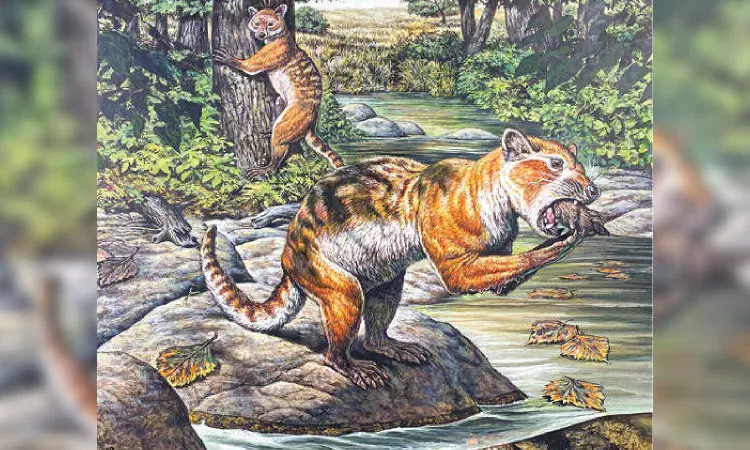By: Qinwei Wu
In what is now North Dakota, 30 million years ago there lived a raccoon-looking prehistoric species. They resembled a cross between a bear, a raccoon, and an otter. Its descendants have evolved to be some of the largest carnivorous mammals ever known. On closer inspection, its skeleton can reveal information about its food, size, and life.
The animal’s fossil was initially discovered in an excavation in 1982. By comparing the skeleton to living and extinct animals, scientists discovered they were a member of the arctoids, carnivorous creatures like seals, skunks, weasels, and bears. Although this animal shares a common ancestor as dogs, they are not the ancestor of today’s bears.
Xiaoming Wang, a vertebrate paleontologist at the Natural History Museum of Los Angeles County, and his team of scientists dubbed the animal ‘Eoarctos Vorax’. ‘Eoarctos’, a word that combined the Greek Goddess Eos of dawn, arctos, Greek for bear, and ‘Vorax’ meaning voracious, indicating to its appetite that most likely got the best of them.
The Eoarctos vorax measured approximately two feet from its snout to its tail. Its skeletal features are somewhat similar to that of a raccoon, though its claws are longer and sharper than a raccoon’s. This suggests that Eoarctos would have been very good at climbing trees and escaping from its predators. They had flatter feet that allowed them to travel great distances unlike its ancestors who preferred to stay in trees.
In recent years, paleontologists have thought that arctoids may have actually came from North America, instead of Europe, which scientists believed for many years.
A dental exam revealed damaged teeth on the right side of its jaw, which most likely became infected. There were also clues that, before his right side recovered, he used his left side and he broke the teeth on that side of his jaw too. “Those are the broken-off roots,” Dr. Van Valkenburgh said. The same case was shown by other skeletons, which led Dr. Van Valkenburgh to conclude that they possibly were eating really hard foods.
According to Dr. Wang’s research team, Eoarctos may have consumed mollusks by crushing its shells like otters. However, because of its small skull (roughly four inches), the bones of the potential prey seemed unlikely to damage its teeth. Dr. Van Valkenburgh suspects that it was possibly consuming fruits with tough pits.
Scientists could tell that the skeleton died young, possibly because of a blood infection from his jaw injury. They suspected the jaw injury would have been incredibly painful, and the creature possibly suffered for weeks or months.
“But for all of his suffering, he certainly made a huge contribution to science,” Dr. Wang said.











